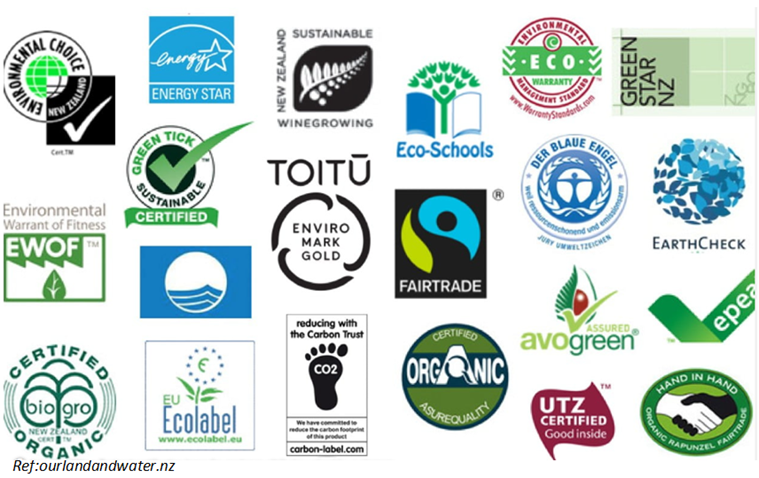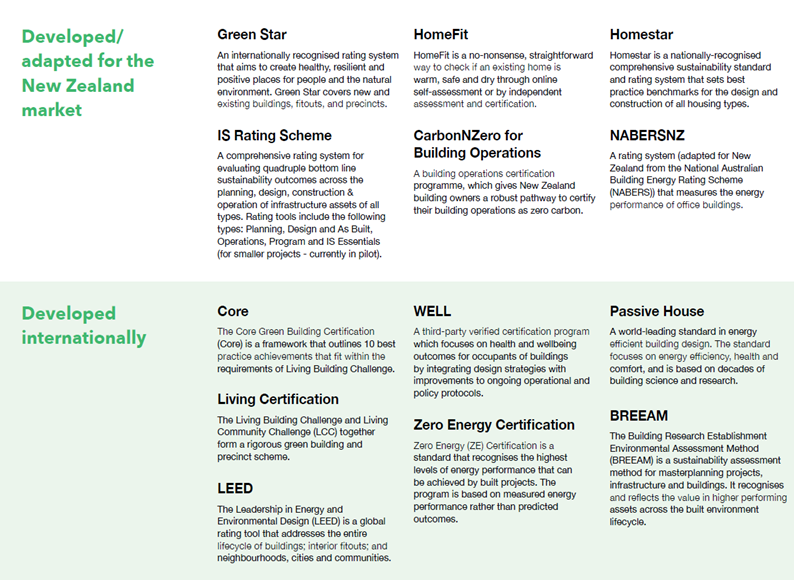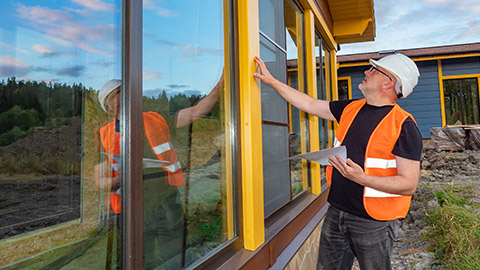After learning about the problems in this topic, we provide the industry's solutions through principled regulations, legislation, and standards to help tackle the issues we face.
Modern methods of construction (MMC) typically involve the manufacture of major building components off-site in a specially designed factory and then brought to the site intending to achieve maximum efficiency and minimum waste.
This is why MMC is often referred to as offsite manufacturing.
However, in New Zealand, like in many other countries, MMCs are gaining popularity due to their various benefits, including sustainability.
These include:
- Reduced Carbon Footprint: MMC often use materials and processes that produce fewer greenhouse gas emissions compared to traditional construction methods.
- Less Waste: Off-site manufacturing can reduce waste generation by optimising material use and recycling scraps.
- Energy Efficiency: Many modern construction methods and designs focus on the product's energy efficiency.
- Faster Construction: reducing construction time, which in turn reduces the environmental impact associated with long construction periods.
- Long-term gain: Having an improved building performance can contribute to long-term building sustainability.
Overall, modern methods of construction play a significant role in promoting sustainability in this ever-evolving international sector.
Further Reading
Have a read of BRANZs article on the move to modern construction. (PDF)
Government Building and Construction Regulations
Aside from comprehending the general methods and principles applied in the building industry, it is also essential to recognise some of the government building regulations that must be complied with.
Remember: legislation is the overarching law created by a legislative body, while regulations are specific rules and requirements issued to enforce and implement that legislation.
Building professionals must access and review regulations affecting their waste management strategy.
The table below lists some general building and construction regulations and how these relate to minimising waste on the building site. Reviewing these regulations will enhance your understanding of how waste management strategies can be incorporated into the worksite.
| Sustainability regulation | How these relate to minimising waste on a building and construction site |
|---|---|
| Resource Management Act 1991 (RMA) | The RMA sets out the framework for managing environmental effects in New Zealand. It requires that all construction activities comply with sustainable practices and minimise waste generation. |
| New Zealand Building Code | The Building Code includes provisions related to sustainability, such as energy efficiency, thermal performance, and material efficiency. It sets standards for the design and construction of buildings to reduce waste and promote sustainability. |
| Green Building Council of New Zealand (GBCNZ) | The GBCNZ is an organisation that promotes sustainable building practices in New Zealand. It offers certifications such as Green Star to help builders and developers reduce waste and improve the environmental performance of buildings. |
| Waste Minimization Act 2008 | This legislation aims to reduce the amount of waste generated in New Zealand and promote sustainable waste management practices. It requires businesses, including construction companies, to minimise and manage waste responsibly. |
| Construction and Demolition Waste Guidance | The Ministry for the Environment has published guidance on managing construction and demolition waste. It advises reducing waste generation, reusing materials, and recycling waste to minimise the environmental impact of construction activities. |
These are only general regulatory requirements for building projects as of 2024. It is important to remember that these requirements will be enforced differently across territorial councils or Authorities. Furthermore, regulatory requirements and standards also vary depending on the specifications, type, nature, and size of a building and construction project.
Who is responsible for sustainable construction practices?
There is a broad range of job titles involved in the activities of a new building project. Many of the features in modern building designs are aimed at appealing to a wide range of activities involved, not just those directly dealing with sustainability issues regularly. After all, every single staff member can influence sustainability and reduce their negative impacts.
Design and management systems can go a long way towards improving sustainability. Still, benefits can only be maximised if all construction workers, building operators, and individual building occupants fully understand the systems and technologies they are working with.
Explore
Watch: Sustainability in everyday life | Sustainability (1:38 minutes)Do you remember?
The following list indicates the government body that administers building work for each region.
- Northland Regional Council
- Auckland Council
- Bay of Plenty Regional Council
- Waikato Regional Council
- Gisborne District Council (also functions as a regional council)
- Taranaki Regional Council
- Hawke's Bay Regional Council
- Nelson City Council (also functions as a regional council)
- Manawatu-Wanganui Regional Council
- Wellington Regional Council
- Tasman District Council (also functions as a regional council)
- Marlborough District Council (also functions as a regional council)
- West Coast Regional Council
- Canterbury Regional Council (Environment Canterbury)
- Southland Regional Council
- Otago Regional Council
Environmental Regulations and Guidelines
In addition to the examples of regulations mentioned earlier, you can also search for more in-depth building regulations and standards that may apply to your project from your local council authority.
These domestic regulations can be accessed through the websites of each local council. Bear in mind, in New Zealand, we currently have 11 regional councils and 67 territorial authorities (of which 6 are unitary authorities, 13 are city councils, and 53 are district councils). These are collectively referred to as local authorities.
Alternatively, if these websites don’t inform you, you can access these documents through the Ministry of Business Innovation and Employment (MBIE).
Waste management is highly monitored in the building and construction industry, and you must research and understand the legislation and associated acts and regulations relevant to your location. We will cover waste management in further detail later in the course.
The set-up of these guidelines will vary per council you are registered with or may follow. However, these guidelines will all have a general idea, and that is that they are to provide building developers and contractors with information about:
- how to avoid and minimise environmental impact
- the likelihood of impact of building activities and how it can be assessed
- a framework within which due diligence obligations can be met, and possible environmental damage is avoided.
The generic terms, regulations, codes, and standards must be remembered when developing a waste management strategy for your site project.
Regulations
Aside from adhering to our own companies' sustainability methods and principles, it is also essential to recognise some of the government's building regulations that must be complied with. The principles and strategies of sustainable management for residential projects are developed to comply with these government environmental regulations and guidelines.
Future building professionals must review regulations affecting their project management strategy.
The tables below list the general building and construction regulations. Additional local or regional regulations may impact construction sustainability around your project in your area. Study these because reviewing these regulations will enhance your understanding of sustainable strategies so you can be instrumental in getting them incorporated into the work site.
| Building Act 2004 | This act sets out the requirements for building work, including provisions related to sustainability, such as energy efficiency and durability. |
|---|---|
| Building Code | The Building Code, part of the Building Act, sets the minimum standards for building work, including energy efficiency, ventilation, and moisture control requirements. |
| Resource Management Act 1991 | This act promotes sustainable management of natural and physical resources, including land use planning and environmental protection, which can impact construction projects. |
| Climate Change Response (Zero Carbon) Amendment Act 2019 | This act sets targets for reducing greenhouse gas emissions, which can influence construction practices to be more sustainable and energy-efficient. |
Governmentally recognised certifications are available to confirm compliance with third-party verified sustainability standards or schemes; even if they are not legislation, they are a form of project recognition.
These are:
| Energy Efficiency and Conservation Authority (EECA) | While not legislation, EECA is a government agency that promotes energy efficiency and renewable energy use, providing resources and guidance for sustainable construction practices. |
|---|---|
| Green Building Council (NZGBC) | This is not a government entity, but the NZGBC is an organisation that provides tools and certifications (such as Green Star) for sustainable building practices, which are often aligned with the goals and regulations the government sets out. |
Certification and Labelling Systems
Creating a market for environmentally friendly products and buildings through environmental labelling can raise awareness of key issues and provide simple information to consumers.
There are now green labelling schemes or ‘Third-party verifications’ for a huge number of products and different types of environmental impacts. Good certifications provide an effective way for construction companies and build projects to show that their products have achieved demanding environmental standards.
Some initiatives prioritise ethical, social, or agricultural issues with environmental implications. Many of these initiatives centre around a logo or symbol that consumers can quickly recognise.
How many of these do you recognise?

Example
The Eco Choice Aotearoa tick:

Sustainable Business NetworkEco Choice Aotearoa (formerly Environmental Choice New Zealand) is the country’s official and only Type I ecolabel – owned and endorsed by the Ministry for the Environment in New Zealand.
Administered by the New Zealand Ecolabelling Trust, the Ecolabel was established in 1992 to provide a credible and independent guide for businesses and consumers who want to purchase and use products that are better for the environment. The label gives assurance that a product or service has met internationally recognised, scientifically defensible standards and is environmentally preferable.
Other labelling criteria set out more detailed data, allowing tradies to easily compare the products they are buying.
Further Reading
More information on many sustainability certifications can be found on the Sustainable Business Network website.Why verification matters
The only way to confirm a project complies with a third-party verified sustainability standard or scheme is for it to be certified. Green Star, NABERSNZ and Infrastructure Sustainability (IS) certifications all rely on mechanisms which are repeatable and auditable so that you can trust the certifications as a measure of impact. (Ref: NZGBC)
Homestar certification
According to the organisation, Homestar, The Building Code in New Zealand is widely recognised as significantly inadequate regarding sustainability in construction and design. This means that many new residential homes in Aotearoa do not meet the basic standards and requirements for health, warmth, ventilation, and energy efficiency suitable for its associated climate and environment.
We must remember that having a warm, dry, and healthy home is a fundamental human right. This is why the New Zealand Building Council provides their Homestar certification. This certification standard enables designers, architects, and builders in the residential sector to create better living, working proactively, and recreational environments for our communities.
source: NZGBC
the risk of false sustainability claims
Some building projects claim that they have high sustainability standards, but they are not independently verifiable, certified by anyone, or even transparent about their claims.
For example, a project might claim that it has a 'Green Star equivalence' or has been ‘designed and built to a high NABERSNZ rating’ or that the project is ‘aligned with the IS Rating Scheme’. (NABERSNZ is an internationally recognised standard backed by the New Zealand government, based on the National Australian Building Environmental Rating System.)
These claims are misleading.
For example, suppose claims are made around targeting a specific NABERSNZ rating. In that case, these claims must be verified to be true because there is a rising concern in the industry regarding the abuse of the term equivalency.
Projects that insinuate compliance with trademarked certification programs like Green Star and NABERSNZ may be at risk of violating trademark regulations. It's crucial to stay vigilant and verify that any building project making such claims has been properly certified.
Additional advice and guidance
Follow these links to learn more.
- New Zealand Green Building Council
- Homestar
- BRANZ
- Eco Choice Aotearoa (Environmental Choice New Zealand)
- Toitū Envirocare (Enviro-Mark Solutions)
The following image shows the Built Environment Sustainability frameworks commonly used in New Zealand, referenced by NZCBC (NZ Green Building Council).

Overview of the National Construction Code
In New Zealand, the Building Code, part of the Building Act 2004, is administered by the Ministry of Business, Innovation and Employment (MBIE). It ensures that buildings are safe, healthy, and sustainable by laying out a set of regulations and standards that describe the minimum requirements for the design, construction, and performance of:
- buildings
- plumbing
- drainage systems.
It is divided into several clauses, each dealing with different aspects of building design and construction:

Like any government legislation, the Building Code is regularly updated to reflect changes in technology, building practices, and research.
This Code is crucial for designers, builders, plumbers, and regulators to ensure that buildings in New Zealand are constructed to a high performance standard and comply with legal requirements.
While the Building Code does not have specific sections or codes dedicated solely to waste management and sustainability, its provisions encourage sustainable building practices that can help reduce waste and minimise environmental impact.
Specifically, those are:
| Section B1 - Structure | This section sets out the structural requirements for buildings to ensure they are safe and durable. While it does not directly address waste management or sustainability, using sustainable materials and construction practices can contribute to reducing waste and environmental impact. | |
| Section B2 - Durability | This focuses on ensuring that the building is designed and constructed to withstand the environmental conditions they are exposed to. Using durable materials and construction methods can reduce the need for frequent repairs and replacements, thus reducing waste. | |
| Section C3 - Fire Safety | Fire safety requirements aim to protect people in and around buildings from the dangers of fire, but using fire-resistant materials can improve a building's environmental performance. | |
| Section E2 - External Moisture | This section sets out requirements for managing moisture in buildings to prevent damage. Using sustainable construction practices, such as proper insulation and moisture management, can reduce the risk of moisture-related damage and the need for repairs, thus minimising waste. |
The RMA is New Zealand’s main environmental legislation and aims to promote the sustainable management practice of its natural and physical resources.
Use the following activities to see how much you already know about the act before learning more.
And for this question, see if you can pick out the right words.
Did you study the definition of the Resource Management Act in the first of the two activities above? If not, be sure you do before moving on.
Two key pieces of legislation for resource management reform are now in place and will be phased in over the coming years.
- The Natural and Built Environment Act
- The Spatial Planning Act
A small number of changes apply from August 24, 2023. Many parts of the Resource Management Act 1991 (RMA) are still in force for now.
Environment.govt.nzBy bringing together laws governing land, air and water resources, the Resource Management Act (RMA) introduces a totally new approach to environmental management.
The resource management system governs how people interact with natural resources. In addition to managing air, soil, freshwater, and coastal marine areas, the RMA regulates land use and infrastructure provision. People can use natural resources if allowed under the RMA or permitted by resource consent.
Essentially, this Act's purpose is to recognise that we must protect our air, water, soil, and general ecosystems for future generations. RMA is designed to establish a workable framework within which the environmental effects of your activities, including all aspects of construction, can be identified and adequately managed.
The Resource Management Act classifies activities into six categories, and the need for consent depends on the type of activity undertaken.
These categories are:
- permitted
- controlled
- restricted discretionary
- discretionary
- non-complying
- prohibited.

This old batch sits right on the beach in Kaiteriteri.
In the construction industry, all building work, in some way, affects the environment.
What the Resource Management Act outlines
Duty to avoid, remedy, or mitigate adverse effects
- Every person has a duty to avoid, remedy, or mitigate any adverse effect on the environment arising from an activity carried on by or on behalf of the person, whether or not the activity is carried on in accordance with–
- any of the sections 10, 10A, 10B, and 20A; or
- a national environmental standard, a rule, a resource consent, or a designation.
Source: Legislation.govt.nz
When reading that snippet from the Act, for this course, consider swapping the term "landowner" for "person." to keep the focus of our studies on residential development. These activities are central to the process of obtaining resource consent.
Resource consent is a formal approval from your council to do something they haven't clearly identified as permitted or prohibited in their plan.
Under the Resource Management Act, regional and city or district councils prepare plans to reflect the desires and aspirations of the local community in relation to natural or physical resources, as well as activities that affect the environment. They provide this resource for builders to check if they need resource consent.
Being granted resource consent means permission to carry out the required work that affects the environment.
For example, district plans often set height limits for buildings. A proposed building taller or wider than the permitted height/site coverage limit would require both resource consent and building consent approval.
Essentially, the resource consent procedure provides permission to carry out an activity that would otherwise fail sections of the Resource Management Act.
What are some of the meanings of the Act?
The RMA is based on:
- the idea that sustainability helps to look after the environment
- promotes the importance of sustainably managing resources
- In the context of the RMA, resources include air, land, soil, water, minerals, energy, plants, animals and structures. Source: https://environment.govt.nz
- encourages us to get involved in decisions about our environment.
The main three functions of the RMA as related to managing New Zealand’s natural and physical resources are as follows:
- Control access to and use of natural resources
- Control the discharge of contaminants (pollutants)
- Manage the adverse effects of all activities in the environment
Any sort of building work comes under the control of both the Resource Management Act and the Building Act.
The Building Act, in general, controls the construction of the building, while the Resource Management Act deals with its environmental effects in and around the construction process.
The Resource Management Act does this by controlling aspects of the buildings, such as its:
- height, bulk, or site coverage
- size of the front, side or back yards and sunlight recession planes
- noise level
- required parking.
In some areas of these controls, particularly with regard to natural hazards, there may be overlaps between the Resource Management Act and Building controls. For example, when resource consent is required in addition to building consent, building work may not begin until the resource consent has also been granted.
This Act's main goal is to ensure that the sustainability of the environment is not at risk to the economic and social goals of individuals or businesses. It recognises that people need to be able to use natural resources but that using them should not impact the availability for future generations to use them.
More information on when you might need resource consent about building work can be found at Consumer.org.nz in the article, Resource Management Act.
Further Reading
To dig a little deeper, read the additional information provided by the NZ government about land resources.
Ministry for the Environment | Manatū Mō Te TaiaoThe basics of life – where we choose to live and the food we choose to eat – have an influence on the demand for land and how it is used in Aotearoa New Zealand. Our growing population will continue to drive this demand in the future.

What are Standards?
Standards are documents that set out voluntary specifications, procedures, and guidelines to ensure products, services, and systems are safe, consistent, and reliable. They cover various subjects, including consumer products and services, the environment, construction, energy and water utilities, and more.
Are standards mandatory?
In general, standards are voluntary: the public is not obliged to conform to standards on their own. However, standards become mandatory when referenced by government Acts and legislation.
In New Zealand, certain government legislation requires compliance with NZS standards and the developed Australian/New Zealand Standards (AS/NZS). These are sets of standards jointly developed with Standards Australia.
For builders and contractors, familiarity with these standards is vital to deliver quality work and simultaneously abide by government rules.
The standards catalogue for building and construction may be accessed by searching the online library at Standards New Zealand/Te Mana Tautikanga o Aotearoa. Use the filter to specify "standards" to focus your search. Note that complete access to standard documents requires purchasing.
The following resources provide standards that you can review when minimising waste on a building and construction site:
- AS/NZS ISO 14001:2016 – Environmental management systems - Requirements with guidance for use
- AS/NZS 3012:2019 – Electrical installations - Construction and demolition sites
- AS/NZS 3831:1998 – Waste management - Glossary of terms
- ISO 15270:2008 – Plastics - Guidelines for recovering and recycling plastics waste.
